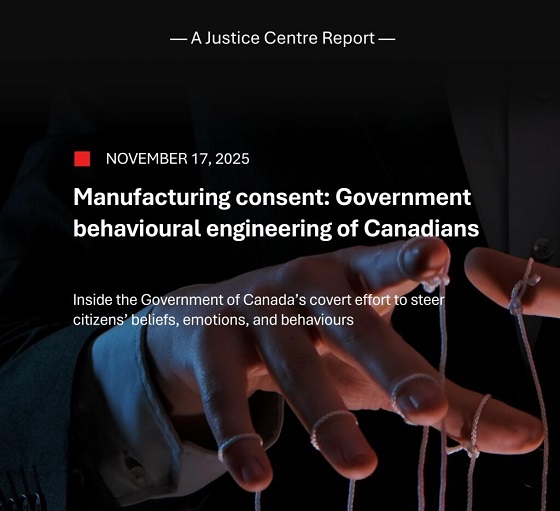Opinion
Will the courthouse be turned into city hall?

The Red Deer Justice Centre, currently under construction, will be open in 2023. The question remains will the current court house be converted into Red Deer’s new city hall?
We just spent over $4 million this year on city hall on renovations including windows, and will spend $4 million creating office space in the downtown community centre for parks staff. How much will it cost to renovate the courthouse into a fully functioning city hall? How much more will we spend converting the old city hall into it’s new use?
The reason I bring this up is because I worry that our city spends too much on short term trends, without as much concern for longer term needs. We will be paying off the winter games for years, yet. The city will be making million dollar payments to the college for the ice rink for years. Nearly a million on signage. Money for rodeos etc. that yield negative results.
Do they get caught up in the moment? The civic yards will require $4 million for berms after several other upgrades, repairs and expansions. How much would we have saved if we had just built less-flashy buildings in Edgar Industrial Park, for example? The green roof on Sorenson Station was another poorly thought out expensive flash.
The next big project on the horizon is the Multi-use Aquatic Centre.
Will the city simply commit to building on Michener grounds or by Timberlands for the euphoria feeling, and have a symbolic sod-turning, just before the next election? Or should they study the Collicutt Centre and it’s massive affect on growth in the south east and replicate that in the north-west? They could hide it in town or go high profile along the QE2 north of Hwy 11a? I fear the city will go with immediate convenience rather than long term planning. Red Deer College uses effectively its location along the QE2 for advertising. The city could learn something?
Back to the courthouse, how much will it cost to renovate to convert to a city hall? Will that mean 20 years before we build the aquatic centre? Just asking.

Carbon Tax
Carney fails to undo Trudeau’s devastating energy policies

From the Fraser Institute
By Tegan Hill and Elmira Aliakbari
On the campaign trail and after he became prime minister, Mark Carney has repeatedly promised to make Canada an “energy superpower.” But, as evidenced by its first budget, the Carney government has simply reaffirmed the failed plans of the past decade and embraced the damaging energy policies of the Trudeau government.
First, consider the Trudeau government’s policy legacy. There’s Bill C-69 (the “no pipelines act”), the new electricity regulations (which aim to phase out natural gas as a power source starting this year), Bill C-48 (which bans large oil tankers off British Columbia’s northern coast and limit Canadian exports to international markets), the cap on emissions only from the oil and gas sector (even though greenhouse gas emissions have the same effect on the environment regardless of the source), stricter regulations for methane emissions (again, impacting the oil and gas sector), and numerous “net-zero” policies.
According to a recent analysis, fully implementing these measures under Trudeau government’s emissions reduction plan would result in 164,000 job losses and shrink Canada’s economic output by 6.2 per cent by the end of the decade compared to a scenario where we don’t have these policies in effect. For Canadian workers, this will mean losing $6,700 (annually, on average) by 2030.
Unfortunately, the Carney government’s budget offers no retreat from these damaging policies. While Carney scrapped the consumer carbon tax, he plans to “strengthen” the carbon tax on industrial emitters and the cost will be passed along to everyday Canadians—so the carbon tax will still cost you, it just won’t be visible.
There’s also been a lot of buzz over the possible removal of the oil and gas emissions cap. But to be clear, the budget reads: “Effective carbon markets, enhanced oil and gas methane regulations, and the deployment at scale of technologies such as carbon capture and storage would create the circumstances whereby the oil and gas emissions cap would no longer be required as it would have marginal value in reducing emissions.” Put simply, the cap remains in place, and based on the budget, the government has no real plans to remove it.
Again, the cap singles out one source (the oil and gas sector) of carbon emissions, even when reducing emissions in other sectors may come at a lower cost. For example, suppose it costs $100 to reduce a tonne of emissions from the oil and gas sector, but in another sector, it costs only $25 a tonne. Why force emissions reductions in a single sector that may come at a higher cost? An emission is an emission regardless of were it comes from. Moreover, like all these policies, the cap will likely shrink the Canadian economy. According to a 2024 Deloitte study, from 2030 to 2040, the cap will shrink the Canadian economy (measured by inflation-adjusted GDP) by $280 billion, and result in lower wages, job losses and a decline in tax revenue.
At the same time, the Carney government plans to continue to throw money at a range of “green” spending and tax initiatives. But since 2014, the combined spending and forgone revenue (due to tax credits, etc.) by Ottawa and provincial governments in Ontario, Quebec, British Columbia and Alberta totals at least $158 billion to promote the so-called “green economy.” Yet despite this massive spending, the green sector’s contribution to Canada’s economy has barely changed, from 3.1 per cent of Canada’s economic output in 2014 to 3.6 per cent in 2023.
In his first budget, Prime Minister Carney largely stuck to the Trudeau government playbook on energy and climate policy. Ottawa will continue to funnel taxpayer dollars to the “green economy” while restricting the oil and gas sector and hamstringing Canada’s economic potential. So much for becoming an energy superpower.
Daily Caller
‘Holy Sh*t!’: Podcaster Aghast As Charlie Kirk’s Security Leader Reads Texts He Allegedly Sent University Police


From the Daily Caller News Foundation
The person in charge of the security detail for Turning Point USA (TPUSA) founder Charlie Kirk says he warned Utah Valley University (UVU) police about access to a rooftop days before Kirk’s assassination, shocking podcaster Shawn Ryan on Monday.
Kirk was assassinated during a TPUSA event at UVU on Sept. 10, during which he was debating attendees. Brian Harpole of Integrity Security Solutions read Ryan texts during the episode of “The Shawn Ryan Show” of him allegedly flagging for UVU’s police chief the rooftop used by Kirk’s alleged assassin on Sept. 8, two days before the assassination.
WATCH:
“We have some correspondence with the chief of the school uh on that day, on Monday, before Charlie was killed and why this hadn’t come out and why he won’t stand up like a man and admit this, I don’t know, but he’s watching a bunch of men lose their careers and he’s okay with it,” Harpole told Ryan. “On Monday before, this correspondence went to Chief Long. ‘Hello, Chief Long. We received this message today from the student group. ‘There is a student roof access pretty close to where CK will be set up at the Utah Valley. (The Sorenson Center has a couple of staircases that go up to walkways on the roofs.)’”
“He comes back and the so, for edification, the Sorenson Center was the building in front of the Losee Center and so, he comes back he says you want uh access to the roof and came back and said I was told students have access above us,” Harpole continued. “If this is true it would be nice to either have it controlled access or allow one of my guys to be there as well if possible. He comes back and his last correspondence was, ‘I got you covered.’ What else am I to do when a command level person from an accredited police department says, ‘I’ve got this area.’?”

Text exchange between Brian Harpole and UVU police official. (Screenshot/YouTube/Shawn Ryan Show)
“That was the chief of police for the UVU Police Department. We’ve called him. He’s never called us back,” Harpole added as Shawn Ryan responded by saying “Holy shit.”
UVU did not immediately respond to a request for comment from the Daily Caller News Foundation.
Video released of the immediate aftermath of the assassination of Kirk shows the alleged gunman making his escape by dropping off the roof and fleeing. Authorities arrested Tyler Robinson, 22, early on Sept. 12, accusing him of fatally shooting Kirk.
“Probably literally all they had to do is post anybody at that stairwell,” Harpole said.
-

 Alberta1 day ago
Alberta1 day agoAlberta Offers Enormous Advantages for AI Data Centres
-

 Alberta1 day ago
Alberta1 day agoNational Crisis Approaching Due To The Carney Government’s Centrally Planned Green Economy
-

 Alberta1 day ago
Alberta1 day agoCalgary mayor should retain ‘blanket rezoning’ for sake of Calgarian families
-

 Bruce Dowbiggin1 day ago
Bruce Dowbiggin1 day agoSports 50/50 Draws: Make Sure You Read The Small Print
-

 Censorship Industrial Complex1 day ago
Censorship Industrial Complex1 day agoQuebec City faces lawsuit after cancelling Christian event over “controversial” artist
-

 Business2 days ago
Business2 days agoLiberal’s green spending putting Canada on a road to ruin
-

 COVID-191 day ago
COVID-191 day agoNew report warns Ottawa’s ‘nudge’ unit erodes democracy and public trust
-

 espionage1 day ago
espionage1 day agoTrump says release the Epstein files







